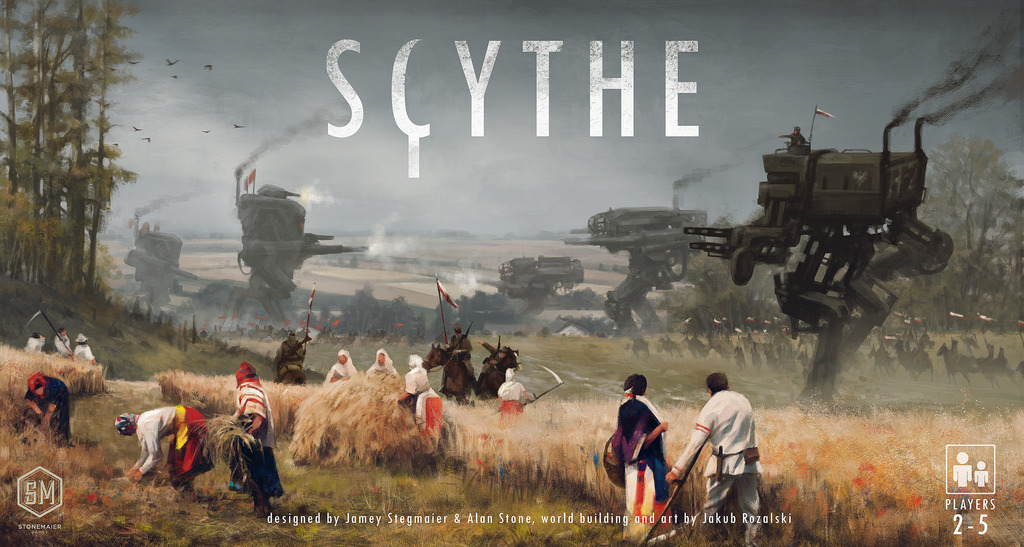Star Trek Panic is a blast!
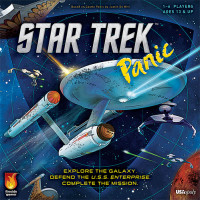
I can still clearly remember the first time we played Castle Panic.
It’s burned into my memory because of how amazing our first experience was. From the very first turn, the monsters streamed from the forest and wrecked havoc on our castle walls and towers. We were on the defensive immediately and it never seemed to let up.
It was awesome!
To this day, Castle Panic is still one of our favorite cooperative board games.
So when given the chance to play the just-released Star Trek Panic, we didn’t hesitate a second.
And we’re so happy we did — because Star Trek Panic is a blast!
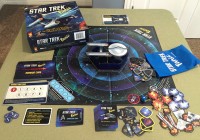
Lest you think you have to be a Star Trek fan to like the game, rest assured you don’t need to be. Nobody in our family is a Trekkie.
Sure, we’ve enjoyed watching the new Star Trek movies. And we’re familiar with some of the original characters. But that’s as far as our Star Trek knowledge goes.
The great thing is that whether or not you’re a Star Trek fan, you can enjoy playing Star Trek Panic.
In fact, Star Trek Panic now tops the list as my favorite of the “Panic” board games.
How to play Star Trek Panic
If you’re familiar with Castle Panic, Munchkin Panic, or Dead Panic, you’ll already be familiar with the basic play of Start Trek Panic — players work together to survive an onslaught of bad things coming at them from all sides.
Star Trek Panic is a cooperative board game in which players work as a team to beat the game. In this case, players take on the roles of crew members of the U.S.S. Enterprise NCC-1701. They work together to complete their 5-year mission and keep the Enterprise in tact.
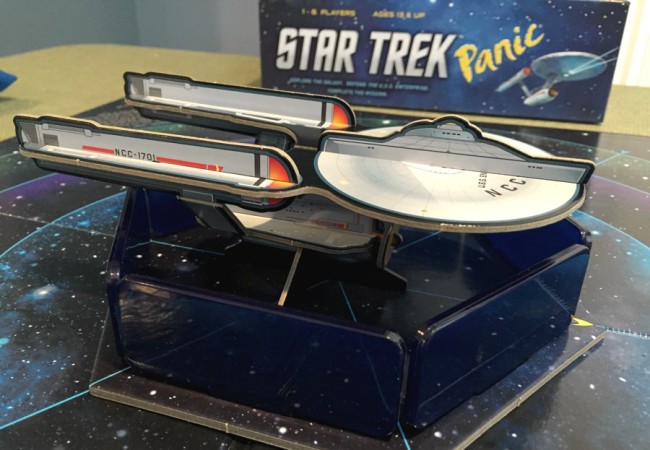
To win the game, player must complete 5 Missions and wipe the board clear of enemy threats.
If the enemies overpower and destroy all 6 sections of the Enterprise, everyone loses.
Rather than go into all the details of the rules of the game, I’ll just give a high-level overview and then dive into notable differences between Star Trek Panic and Castle Panic.
If you’re unfamiliar with the “Panic” board games, check out our Castle Panic video review to get more details on the original.
Set Up
The game starts with the Enterprise in the center of the game board with 6 shields protecting it. Three specified Threat tokens are placed in the outer ring at locations, 1, 3, and 5. The rest of the Threat tokens are placed in the draw bag.
Each player gets a Character card representing a crew member (with it’s unique role ability) as well as a starting hand of Enterprise cards.
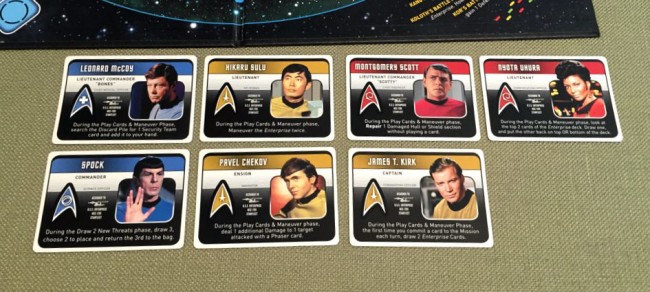
The Mission cards are shuffled and the first one is drawn and placed face up next to the game board.
Once players know what their first mission is, they can begin the game.
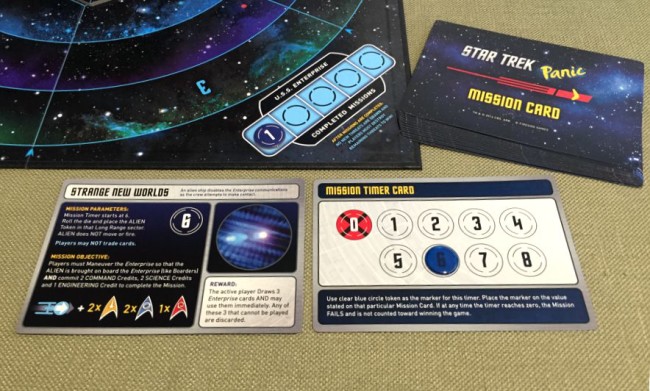
Game Turns
The game includes reference cards to serve as reminders if players forget the order of the 7 steps on their turn.
1. Draw Enterprise Cards
Players begin their turn by drawing Enterprise cards up to their starting hand size.
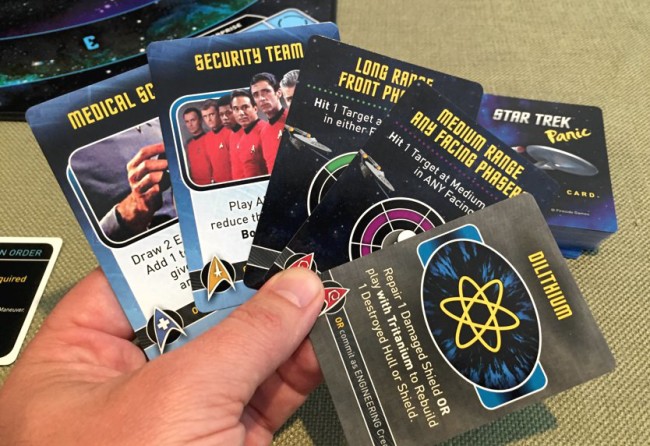
2. Reveal New Mission
If the current mission isn’t yet complete, players skip this step. If the previous player completed a mission, draw a new Mission card and do any set up required for the mission.
3. Trade a Card
The active player may trade one card with another player.
4. Play Cards and Maneuver
The active player can play as many cards from their hand as they’d like. The cards may deal damage to enemy threats, repair damage to the Enterprise and its shields, or resolve Missions.
Hit cards are used to damage enemy threats. The Hit cards indicate which area of the board they can be used in. For example, in front of the Enterprise, to the side, or to the rear. The cards also indicate the distance they can reach (short, medium, and long range), which are also shown by color-coded rings on the cards and on the board.
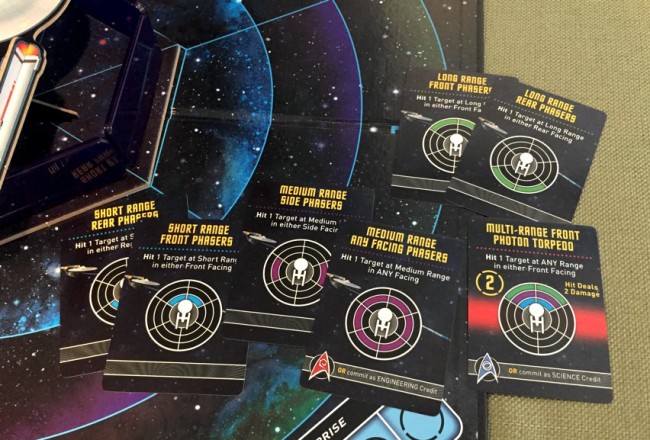
Each Hit card will deal 1 damage to a Threat. To take a damage, the Threat token is rotated down 1 defense value. If it was already at “1” when it was hit, it’s removed from the board and discarded.
Other cards allow players to repair damaged Shields and Hull sections of the Enterprise or do other special actions.
In addition, cards with mission symbols in the bottom left can be used for completing Mission requirements. To do so, a player simply places a corresponding card next to the current Mission card.
Cards can either be played for their main effect or as part of completing a mission objective, but not both.
The active player can also maneuver the Enterprise during this step — either before, during, or after playing cards.
To maneuver, the player turns the Enterprise 1 facing either direction. Or a player can have the Enterprise move forward one space. Since the Enterprise always stays in the middle of the board, this second option is simulated by moving all Threat tokens in front of the Enterprise one range closer.
However, once the Enterprise has 3 or more Hull sections destroyed, it can’t maneuver. There are also a couple other situations in which it can’t maneuver. In these situations players place a No Maneuver token on top of the Enterprise to remind them of this restriction.
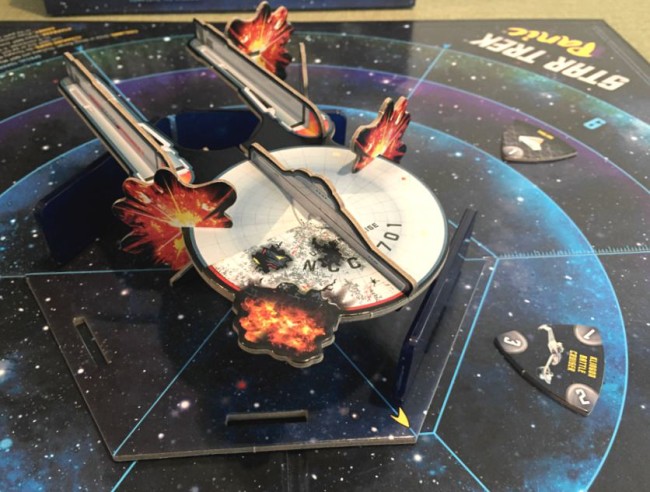
5. Check Mission Status
Each Mission has a set of objectives players need to accomplish for it to succeed. In addition, each Mission has a limited amount of time in which to complete it.
Players check to see if all mission requirements have been satisfied (such as certain cards committed to the mission and/or other aspects completed).
If they have, players receive the reward listed on the Mission card.
If not, the marker on the Mission Timer is reduced by 1. If the mission objectives aren’t completed in time, the mission fails.
If a mission fails, any committed cards are discarded and the Mission card is placed at the bottom of the Mission deck.
In either case, a new Mission card will be revealed during step 2 of the next player’s turn.
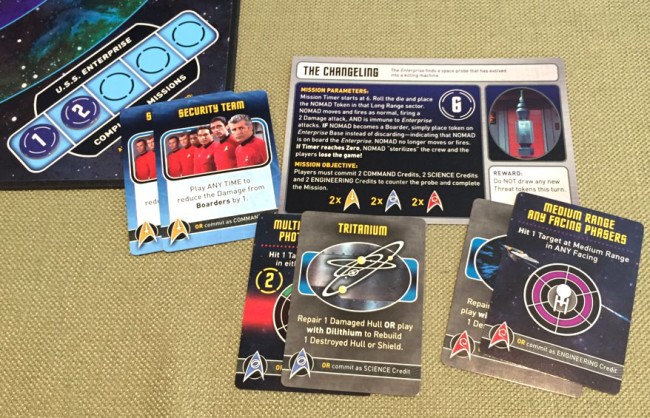
6. Threats Move and Fire
This is the step when things heat up.
First, all Threats move 1 range closer to the Enterprise. Then all Threats fire simultaneously on the Enterprise (no matter the range).
The Enterprise has 6 facing sections, each with 1 Shield and 1 Hull section. And it only takes 2 hits to destroy each.
When a Threat fires, it deals 1 damage to that facing. When a Shield receives 1 hit, a shield damage token is placed on it. If that shield takes another damage, the shield is destroyed and removed.
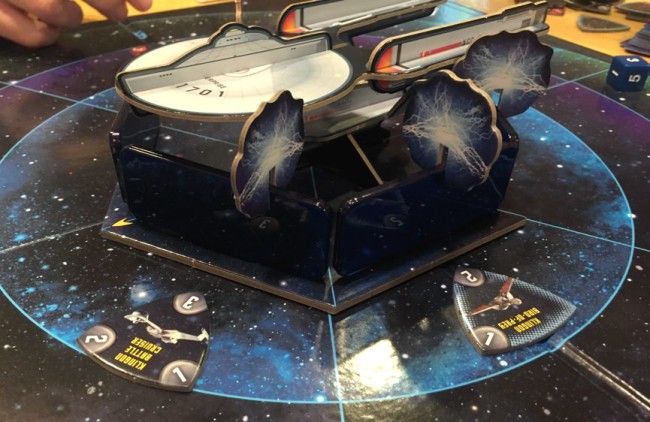
If there’s no shield on that facing to protect the Enterprise, the damage is dealt to the Hull of the ship. The first damage is marked with a Hull damage token. The second damage to a Hull section will destroy it. Players place a Destroyed piece of the Enterprise on that section.
If a Destroyed Hull section takes more hits, no additional damage is dealt. Instead, for each damage that would be dealt, Enterprise cards are removed from the top of the deck and are out of use for the remainder of the game.
If a Threat token starts in short range and there’s a shield at that facing, the Threat fires at the shield and deals damage as indicated above.
However, if a Threat token starts in short range and there isn’t a shield at that facing any more, the Threat becomes a Boarder. In this case, the defense value of that Boarder is applied immediately as damage to the Hull. For example, if a Threat’s defense value is currently at a 2, it will immediately deal 2 damage to that Hull section — destroying it in one blow. The Threat token (Boarder) is then discarded.
Note that some enemy ships are Cloaked and will move differently throughout the game — alternating between being seen and unseen. In addition, there are some special Threat tokens that trigger other special events (none good).
7. Draw 2 New Threats
For their final step, the active player draws 2 new Threat tokens from the bag and resolves each in turn. Most tokens are enemy ships and will be placed in the long range section corresponding to the roll of the die. They are placed with their highest defense value towards the Enterprise.
Any tokens that aren’t enemy ships are read and resolved immediately.
If there aren’t enough Threat tokens in the bag to draw, all the discarded tokens are placed back in the bag and drawing continues. Thus, enemy threats will just keep on coming throughout the game.
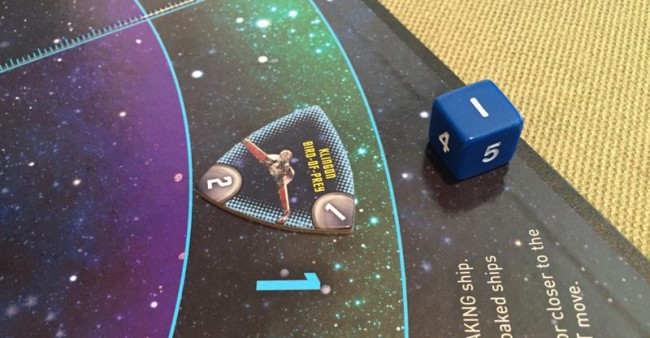
Game End
The game can end in a number of ways — most of which are bad.
If the players successfully complete 5 Missions and destroy the remaining Threat tokens on the board, they win the game!
However, if all 6 Hull sections of the Enterprise are destroyed before players can complete their missions and destroy the remaining threats, the players lose the game.
Notable differences with Star Trek Panic
Star Trek Panic has become my favorite “Panic” cooperative board game for a number of reasons. While I still really like Castle Panic, and plan to keep playing both, these additions create a fun, new game experience.
For starters, having Character cards with unique abilities is very nice. This way each player gets a special action on their turn that helps tremendously. It also fosters working together even more by finding ways to play to each Character’s strengths.
The next big, new game element (and perhaps the most noticeable) is the addition of Missions. Now instead of just trying to wipe out all the baddies to win the game, players have other things they must accomplish along the way.
There are 18 Mission cards included in the game and each one has its unique objectives. Since missions are randomly drawn through the course of the game, every game plays out differently. Not only do we love the variety of the missions, we love the added tension in the game by having to choose how to use our cards.
Now we have to choose whether to use the ability of the card or commit it to a mission. It can create some tricky choices and we love it.
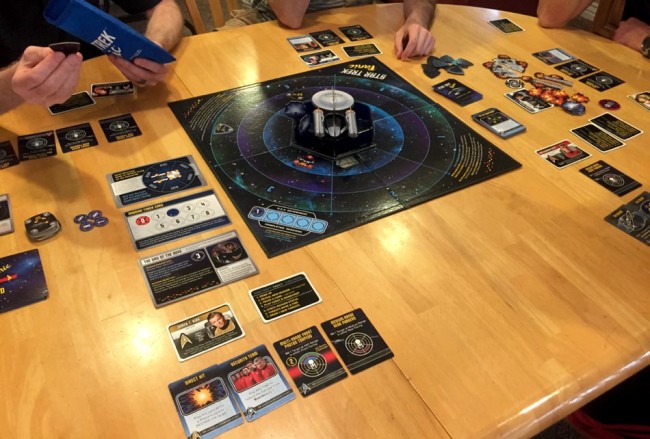
Next is the ability to maneuver the Enterprise.
In Castle Panic, unlucky die rolls can cause monsters to stream in from the same quadrant one after the other. And there’s nothing you can do about it.
But in Star Trek Panic, players can rotate the Enterprise — giving them more flexibility and control. So if a shield is down in one facing, players can rotate the Enterprise to an adjacent facing that still has a shield up to block incoming enemy threats. Or they can maneuver the Enterprise so that the Hit cards they have in their hand can be more useful on their turn.
Not only does this give players more flexibility and control in the game, it also ties so well to the theme of the game. Players really are controlling the Enterprise in space as they maneuver to get in range and destroy enemy ships.
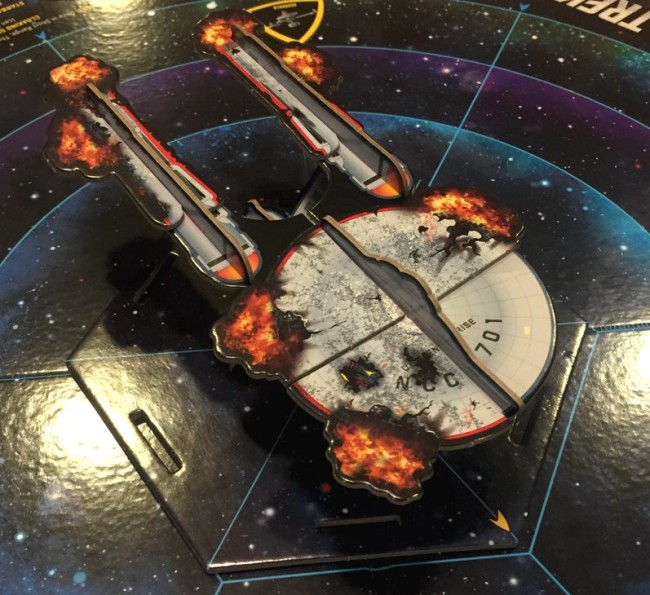
The last notable difference well mention is one that delivers even more panic to the game — all enemy ships fire!
In Castle Panic, monsters delivered blows to the castle walls and towers when they got to the center ring. However, in Star Trek Panic the enemy ships fire on the Enterprise from every range!
This means the Enterprise is constantly getting barraged with damage. Players have to keep dishing it back on the enemy ships or they’ll be doomed.
As if that weren’t enough, destroyed threat tokens will eventually be placed back in the bag and will keep on coming!
Only when 5 missions are completed will the threats stop being drawn from the bag. But players still have to destroy all the threats on the board after that point to win. And if the Enterprise survives that long, it most likely will be limping along with just a Hull or two left in tact.
Needless to say, it really puts the “Panic” in Star Trek Panic.
And we get a kick out of it.
At least some of us do…
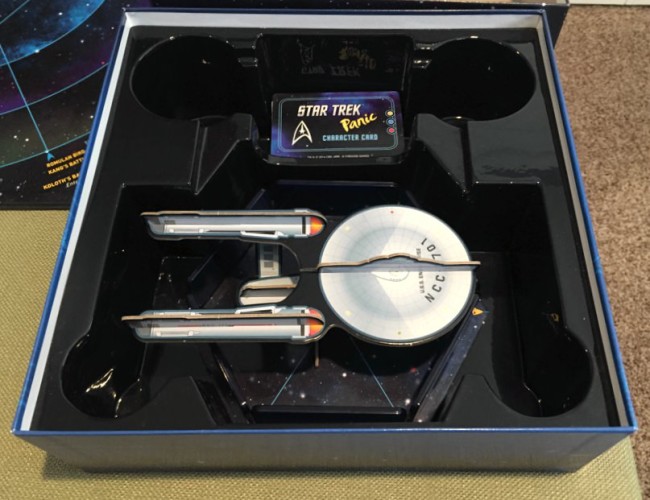
Can the whole family enjoy Star Trek Panic?
If your family is like ours, it may be that not everyone enjoys playing Star Trek Panic.
And in our case, it’s Trevor that says he’ll never play again.
It causes him too much anxiety.
He played in our first game of Star Trek Panic in which we barely held on for a slim victory. And he’s refused ever since because the constant onslaught is too stressful.
From the outset it feels like we’re in a losing battle without hope of survival. For most of us, we get a kick out of it — struggling together against tough odds. But Trevor doesn’t enjoy feeling that pressure for about an hour and a half.
He’ll happily sit it out.
The cool thing about his strong reaction though, is that it confirms how engaging the game really is.
When a game can create such an emotional response, you know it’s a solid game.
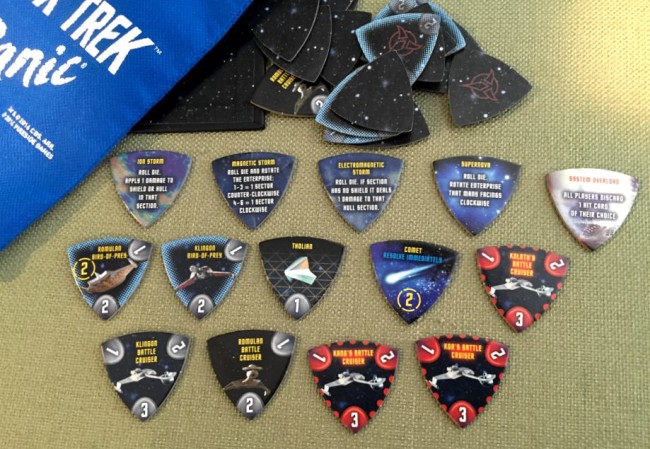
How does Star Trek Panic score on our “Let’s Play Again” game meter?
While Star Trek Panic doesn’t even register on Trevor’s “let’s play again” game meter, it comes in high for the rest of us.
The length of the game will vary depending on the random missions drawn. So we haven’t played any games back-to-back. But like I mentioned before, it’s now my favorite of the “Panic” board games and has a prominent spot in our game closet.
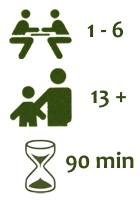 Even though the game typically lasts more than an hour, it’s hard to notice the time going by because of how engaged everyone is even when it’s not their turn. With 7 steps on a player’s turn, you may anticipate a lot of downtime.
Even though the game typically lasts more than an hour, it’s hard to notice the time going by because of how engaged everyone is even when it’s not their turn. With 7 steps on a player’s turn, you may anticipate a lot of downtime.
However, a number of those steps are just “checking” type steps so they go very quickly. And what one player does on their turn will definitely impact what other players will be able to do on their turns. So players are constantly talking through the options — just like a real crew on a spaceship would have to do.
Star Trek Panic gets a hearty recommendation from our family!
If you haven’t played and of the “Panic” games yet, don’t wait any longer. Grad a copy of Star Trek Panic.
And for those who have enjoyed playing a game in the “Panic” series, we’d say “Hop aboard the Enterprise!” You may not survive, but you’ll have a blast.
Thanks USAopoly and Fireside Games for a fantastic cooperative board game!


